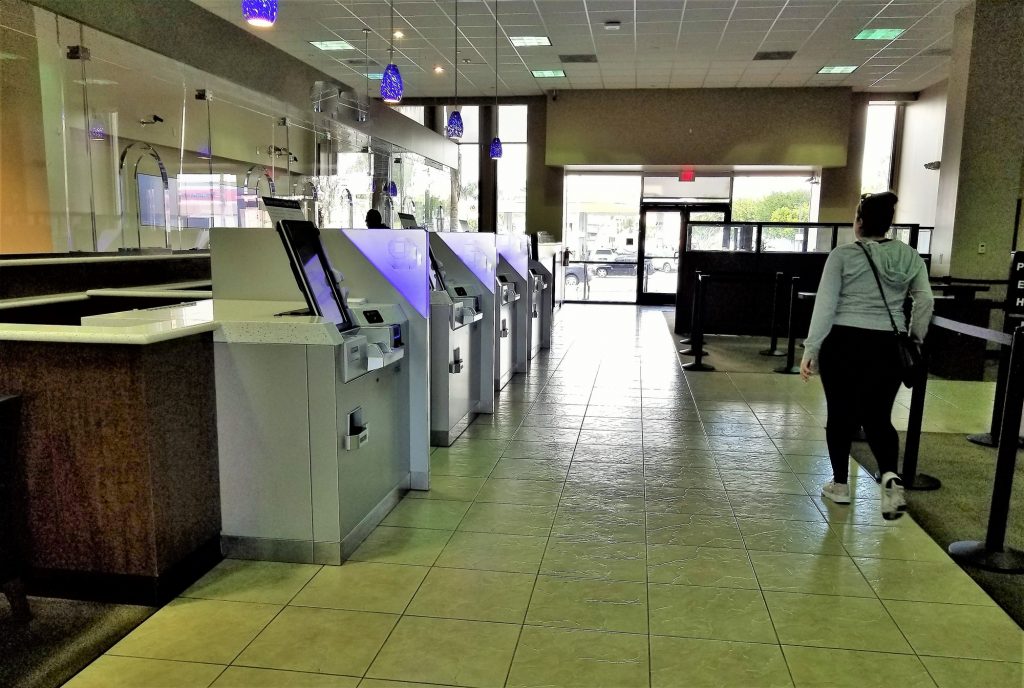Did you know that Americans on average pay $7.69 in bank fees per month? That amounts to more than $92 in bank fees per person per year. There are account monthly maintenance fees, ATM fees, overdraft fees, foreign transaction fees, and more – the parade of bank fees is endless.
As more and more online-only neobanks and financial apps become available on the market, it makes sense for a frugal person to finally “cut the cord” on traditional banks. Once you have made that decision, the next step is to close your bank accounts. In this article, we will focus on closing Chase accounts.
To close a Chase account, you can do it in 4 different ways – online, in-person, by mail, or by phone. The easiest way is by phone.
To close a Chase saving or checking account, you can call Chase’s 24/7 customer service line at 1-800-935-9935. If you are closing a personal credit card, call 1-800-432-3117. To close a business credit card, call 1-888-269-8690. Tell the service rep you want to close your account. Make sure you have your account number with you, and be ready to answer security questions.
For the rest of this article, we will look at these 4 methods of closing Chase accounts in more detail. We will also talk about the things you need to do before you close your Chase account. After that, we will go over the process of closing a Chase joint account as well as the ways to confirm your Chase account has indeed been closed. Last but not the least, we will discuss the impact of closing a Chase account on your credit scores.
How to Close Chase Account Online

To close your Chase account online, follow the steps below:
- Go to the Chase website
- Sign in with your username and password
- Click on the Main menu icon on the upper left corner
- Click on Secure messages from the main menu that appears
- Click on New message on the upper right corner
- For the field What is this about?, select I have a question about one of my accounts from the drop down list
- For the field Choose an account, select the account you want to close
- For the field Choose a topic, select Account Inquiry
- Click on Send us a message
- In the text box that appears, write that you want to close your account. Then hit Send message
- Within 24 hours, you will get a reply in the same Secure messages section of the Chase website asking for verification and confirmation
- Once your identity has been verified by Chase and you have confirmed that you want to close your account, you will be asked to decide where to send the remaining balance of your account
- Without running into any problem, you will receive an email within 1 or 2 business days confirming that your account has been closed
How to Close Chase Account by Phone

Before you call Chase to close your account, make sure you have the following information with you:
- Your Chase account number
- Your Chase debit card number if your account comes with a debit card
- Your Social Security number
To close your Chase account by phone, follow the steps below:
- Call the Chase customer service line at 1-800-935-9935. If you are closing a Chase personal credit card, you can also call 1-800-432-3117. And if you are closing a Chase business credit card, you can call 1-888-269-8690
- To bypass the automated phone system, press “0” to talk to a real person. Customer service reps are available 24 hours a day, seven days a week
- Tell the customer service rep that you would like to close your Chase account
- The customer rep will guide you through the process of closing your Chase account. You will need to provide information about your account such as your name, account number, and physical address
- You will also need to provide your Social Security number and to answer personal security questions such as “What is the name of the hospital you were born at?”
- Without running into any problem, your account will be closed within the next 24 hours
How to Close Chase Account in Person

Before you go to a Chase to close your account, make sure you have the following information with you:
- Your Chase account number
- Your Chase account statement
- Your Chase debit card or credit card
- Your Chase checkbook
- Your Social Security number
- A government-issued ID such as a driver’s license, a state’s ID, or a passport
To close your Chase account in person, follow the steps below:
- Find a Chase branch near you using the online Chase branch locator
- Go to your chosen branch and ask to speak with a banker there
- Tell the banker that you would like to close your Chase account
- Be prepared to provide information about your Chase account such as your name, account number, and physical address
- You will also need to provide personal verification information such as a government-issued ID, your Social Security number, and your Chase account PIN. This is to make sure you are the true account holder
- Without running into any problem, your account will be closed within a few minutes before you leave the Chase branch
How to Close Chase Account by Mail
To close your Chase account by mail, download a Chase Account Closing Form and fill out the required information.
Then, send your completed Chase Account Closing Form to Chase’s address at:
National Bank By Mail
P O Box 36520
Louisville, KY 40233-6520
For rush delivery, send your completed form via certified mail or overnight express mail to:
National Bank By Mail
Mail Code KY1-0900
416 West Jefferson, Floor L1
Louisville, KY, 40202-3202
How To Close a Chase Joint Account
To close a joint account in Chase, simply follow the instructions above for closing Chase accounts in general. Chase allows any one owner of a joint account to close the account without the permission of the other owner.
Having said that, if you are one of the 2 owners of a Chase joint account, closing (and emptying) that joint account without the permission of the other owner can expose you to legal issues even if Chase allows you to do so.
How To Confirm Your Chase Account Is Closed
There are a few ways to confirm that your Chase account is closed.
- Try using your Chase credit or debit card at an ATM. If your card no longer works at an ATM, that is a good sign that your account has been closed
- Try signing in to your Chase account online using your usual username and password. You should not be able to log in if your account is closed
- Trying signing in to the Chase mobile app using your usual username and password. You should not be able to log in if your account is closed
What Should I Do Before Closing My Chase Account?
Before you contact Chase to close your accounts there, there are a few things you need to do first.
Step 1. Open a New Account (If You Haven’t)
If you are closing a Chase bank account, make sure you have another bank account ready before you proceed to close your existing Chase account. You do not want to be stuck with no bank account after you have closed your Chase account. So make sure you have opened a new bank account before closing your old one.
Likewise, if you are closing a Chase credit card account, make sure you have at least one other credit card account you can use.
If you are looking for a bank account with no monthly maintenance fee, free nationwide ATM access, and a low initial deposit requirement, try the following options:
- Credit Unions
- Your local community banks
- Capital One 360 Checking Account
- Ally Interest Checking Account
- Discover Cashback Debit Account
- Alliant Credit Union High-Rate Checking Account
- Chime
- Schwab Bank High Yield Investor Checking
- Axos Bank Rewards Checking
- Simple
- FNBO Direct Online Checking
- Bank5 Connect High Interest Checking
- Varo
Step 2. Remove All Recurring Payments Drawn From Your Chase Account
Review your account statements to find out all the recurring payments that are drawn from your Chase account. Transfer them from your Chase account to your new account.
Make sure you stop writing any new check using your Chase account’s checkbook. Also, stop putting down the debit or credit card number of your Chase account as a payment method for your purchases.
Common monthly recurring payments are:
- Water
- Electricity
- Gas
- Mobile Phone
- Internet
- Cable TV
- Mortgage or rent
- Condo fee
- Gym fee
- Insurance premiums – auto, homeowner, renter, health, dental, vision, life insurance, etc
- Car lease / car loan payment
- Streaming TV – Netflix, HBO Max, Disney Plus, Apple TV+, Hulu + Live TV, YouTube TV, AT&T TV Now, Sling TV, etc
- Streaming Music – Spotify, Pandora, Apple Music, Amazon Music Unlimited, SiriusXM Internet Radio, etc
- Delivery Services – Amazon Prime, Walmart Plus
- Product Subscriptions – Birchbox, Stitch Fix, Dollar Shave Club, BarkBox, Blue Apron, etc
Make sure you review payments as far back as a year ago because some payments are made annually rather than monthly. Payments that are commonly made annually include:
- Magazine subscriptions
- Amazon Prime & Walmart Plus both offer an option for annual payments
- Membership fees of warehouse clubs such as Costco and Sam’s Club
Step 3. Remove All Direct Deposits To Your Chase Account
If you are closing a Chase checking account, make sure all the direct deposits that are now going to your Chase account is transferred to your new checking account instead. Common direct deposits include:
- Salaries
- Social Security
- Pension plan
- 401(k)
- IRA
Step 4. Remove Your Chase Account From Online Payment Services
Very often, people have their checking accounts and credit card accounts linked to online payment services such as PayPal and Venmo.
Be sure to remove your Chase account from all those online payment services and replace it with your new account.
Step 5. Resolve Any Overdue Fees
Check to see if you have any overdue fees in your Chase account. Make sure you resolve them completely. If you ignore overdue fees your Chase account balance may go negative. When that happens, Chase could send your account to a collection agency. Your Chase account then becomes a collection account. The collection agency may then notify the credit bureaus of your collection account. In that case, your credit scores could take a big hit.
Even worse, your collection account will remain on your credit reports for as long as 7 years from the date of the original delinquency, whether or not you pay it off eventually. That means your credit scores will be harmed for the next 7 years.
Step 6. Transfer Chase Balance To Your New Bank Account
Transfer the balance in your Chase checking or saving account to your new bank account. You might want to leave some money in your Chase account to cover any unexpected charges or pending transactions.
Also, most Chase accounts have minimum account balance requirements. If your account balance drops below the minimum requirement, Chase will start charging your account a monthly maintenance fee. So keep that in mind in deciding how much money to leave behind in your Chase account when you do your balance transfer. You may want to leave behind enough money to stay above the required minimum balance to avoid being charged a monthly fee.
- Chase Total Checking
- Monthly Maintenance Fee: $12
- Minimum Balance Required to Waive Monthly Fee: $1,500
- Chase Premier Plus Checking
- Monthly Maintenance Fee: $25
- Minimum Balance Required to Waive Monthly Fee: $15,000
- Chase Sapphire Checking
- Monthly Maintenance Fee: $25
- Minimum Balance Required to Waive Monthly Fee: $75,000
- Chase Savings
- Monthly Maintenance Fee: $5
- Minimum Balance Required to Waive Monthly Fee: $300
- Chase Plus Savings
- Monthly Maintenance Fee: $20
- Minimum Balance Required to Waive Monthly Fee: $15,000
Step 7. Download 6 Months of Monthly Statements of Your Chase Account
Go to the Chase website and download at least 6 months of monthly statements of your Chase account. You may need those statements sometime in the future – for example, to prove that you have made a payment. After you have closed your Chase account, it will not be so easy to get access to your old statements. So make sure you download those statements while your Chase online account username and password still work.
- Go to the Chase website
- Sign in with your username and password
- Click on the Chase account you want to close
- Click on Statements
- For each statement you want to download, click on Open or save
- Your statement will appear in a new window. Click on the Download icon on the upper right corner to save it to your computer
Does Closing a Bank Account Hurt Your Credit?
Banks do not report your bank account information to the credit bureaus (Experian, TransUnion, and Equifax), so it is not listed on your credit reports. Account closures will not show up on your credit reports either.
Your credit score is derived based on the information found on your credit reports. It is a measure of how you manage your debt payment and has nothing to do with how much money you have in your bank accounts. As such, there is no direct link between your checking or savings accounts and your credit scores.
While the actual closure of a bank account will not directly affect your credit scores, it could do so indirectly if your account had a negative balance when it was closed.
If you do not pay off the debt in your account promptly, Chase could send your account to a collection agency. Your Chase account then becomes a collection account. The collection agency may then notify the credit bureaus of your collection account. If that happens, your credit scores could take a big hit.
Even worse, your collection account will remain on your credit reports for as long as 7 years from the date of the original delinquency, whether or not you pay it off eventually. That means your credit scores will be harmed for the next 7 years.
In addition to harming your credit scores, which would harm your chance of getting approved for credit cards, mortgages, and loans; an overdraft bank account that is closed may also harm your chance of getting approved for checking or saving accounts. That is because your collection account may also get reported to ChexSystems, which manages your bank report.
Your bank report is similar to your credit reports, but instead of listing information about your debt load and debt payments, it lists information about your banking activities. Having blemishes on your bank report may harm your chance of getting approved for bank accounts in the future.

Benjamin is a certified financial advisor, with over 10 years of experience in the industry. He is knowledgeable about various business and financial topics, such as retirement planning and investment management. Ben has been recognized for his work in the financial planning industry. He has also been featured in various publications.

